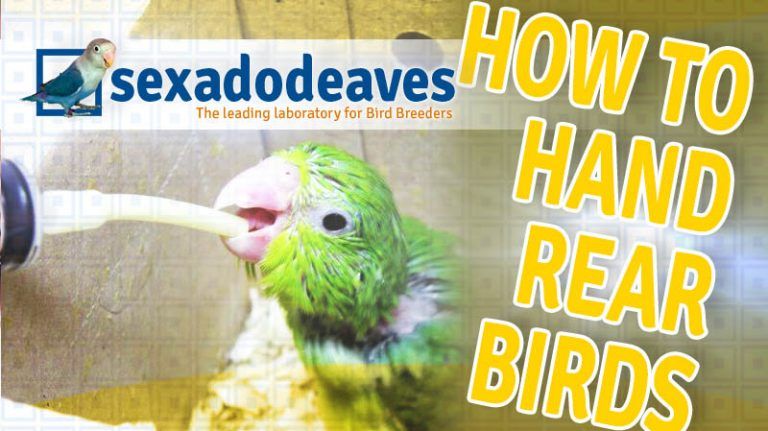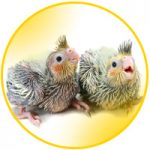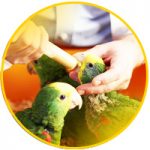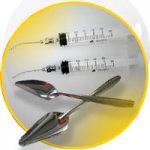HOW TO HAND REAR BIRDS
The increasing interest of keeping birds as pets is linked to the expansion of hand breeding. Hand reared birds are tamer and, what is more important, more used to human contact. Nowadays, breeding birds is a very common

The increasing interest of keeping birds as pets is linked to the expansion of hand breeding. Hand reared birds are tamer and, what is more important, more used to human contact.
Nowadays, breeding birds is a very common activity which is gaining more and more popularity. In Spain, the most common species for hand breeding -and consequently the most common bird pets- are little psittacidae such as lovebirds, cockatiels and budgies. Regarding European species, in the Iberian Peninsula and in other southern countries, we can find a lot of finches and canaries breeders (singing birds).
Why to hand rear birds?
Besides using the hand feeding to tame birds and making them better pets, we can identify other reasons for hand rearing chicks:
- Parents break the eggs or attack the chicks: not all parents will properly breed their offspring. They might either destroy the eggs or attack the newborns. This type of problem requires human intervention if we want the chicks to survive.
- Parents do not feed the chicks correctly: once the birds are born, we have to daily check their weight and the state of their crops. If their crops are empty and do not gain enough weight, we should take them from the nest to be hand fed with formula.
- Increase the number of chicks per season: there are certain species that only rear a single clutch per breeding season so we will not be able to get many chicks per year. If we want to encourage them to lay again, we should remove the eggs from their parents soon after they are laid. This should make them breed again as if the first clutch never existed.
- We want to be part of the breeding process and being able to rear the birds ourselves: we cannot denied that the miracle of life fascinates and attracts a lot of people. A lot of bird lovers get their first bird couple moved by that feeling so they can be part of that experience.
What do we need for hand rearing birds?
-
A brooder
The majority of newborns will need a source of heat until they are able to thermoregulate themselves. A brooder is not a cardboard with a light bulb, because the light will not only produce heat but light, which is not appropriate for the chicks. In nature, chicks are in dark places so it not advisable for them to be 24 hours a day exposed to artificial light.
When we say that we need a brooder, we are talking about a professional brooder capable of keeping a constant temperature and that is able to provide a hot, dark, humid environment.
The temperature should be of 36.6°C, although we have to keep an eye on the chicks and their behavior will tell us how much temperature they need.
If they chicks get very close to each other or shiver, they need us to turn up the temperature. On the contrary, if they keep apart and get very active, we should turn down the temperature of the brooder.
As we already mentioned, humidity is also a very important parameter. A wrong level of humidity can make the chicks get dehydrated. The advisable level of humidity is of 40-50%.
-
Breeding formula
There is a wide range of formulas in the market. The great majority will be suitable for the chicks and will cover all their nutritional requirements. Nevertheless, we can always ask an experienced breeder to guide us about which product he/she prefers for his/her birds.
The powder formula only needs us to add some hot water to be ready. Heat the water and add the powder formula little by little. Thickness of the mixture will depend on the age of the chicks, the younger chicks the more watery it should be. As days pass by, we should thicken the formula.
The perfect temperature for the formula is 40°C.
-
Feeding tools
There are a lot of different tools we can use to provide formula to the chicks, but we will be recommending only two.
First, we advise you to feed newborns with a bent tea spoon. This tool is similar to the parents’ beak so newborns will quickly get used to it making it easier for them to eat. Once they get a bit older, we can change the spoon for a stainless steel crop needle. Their rounded tip will avoid damaging the birds’ mouth. Another benefit of using this tool is that disinfecting it is very easy.
Conclusion
Hand breeding takes a lot of time and effort, but it fascinates a lot of people.
If we want to breed birds, it is very important that we think about the reasons underneath and that we get all the necessary tools and information to get healthy and tame birds.




